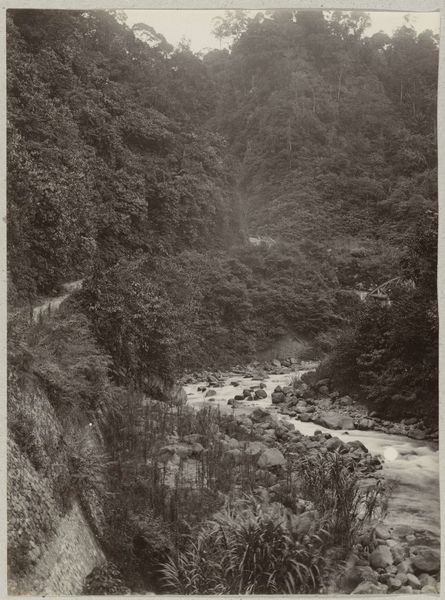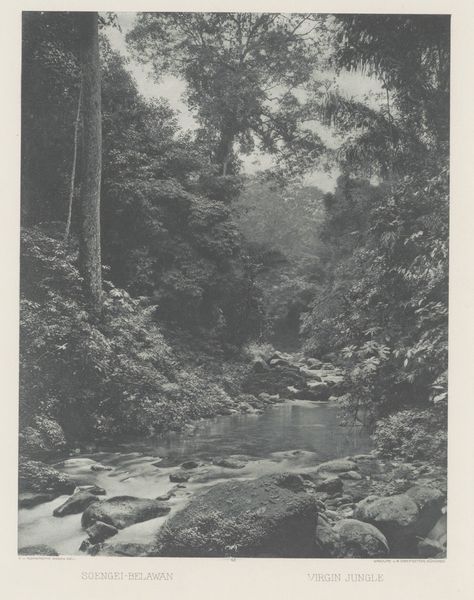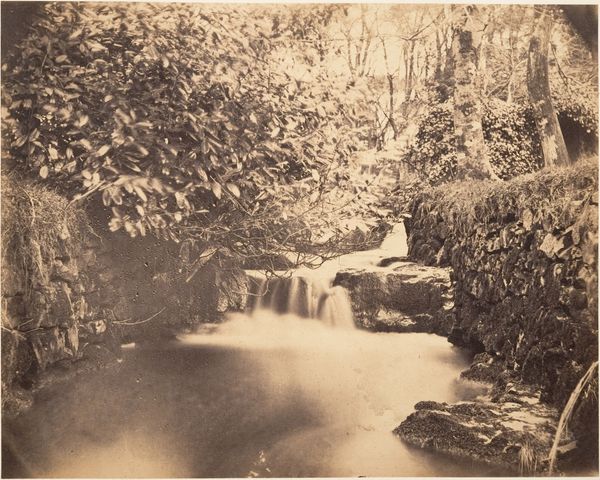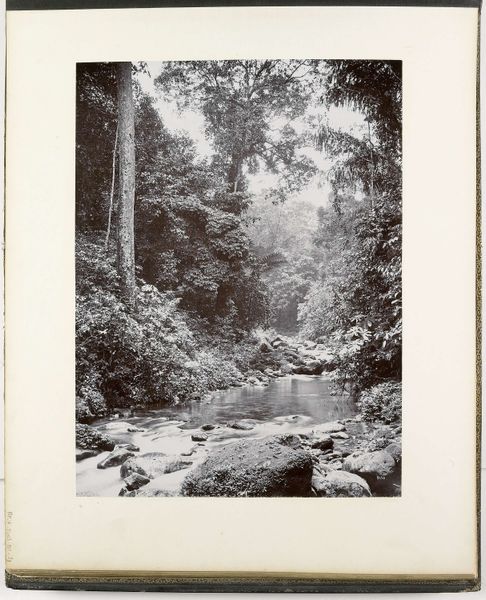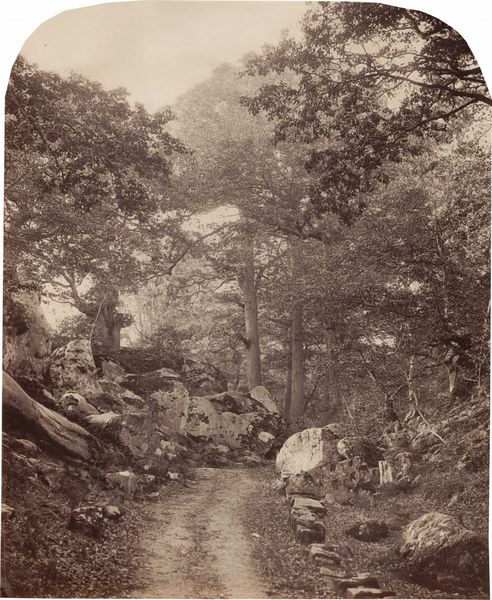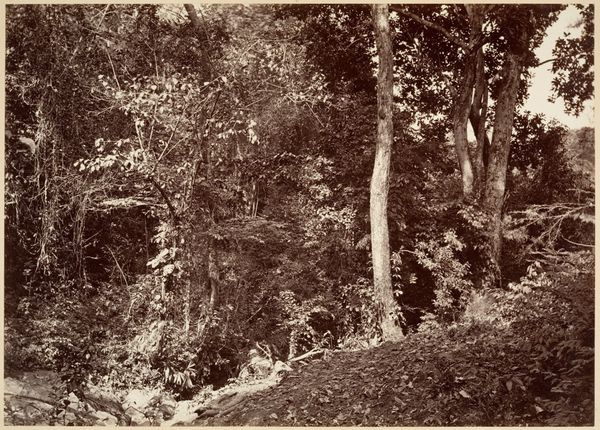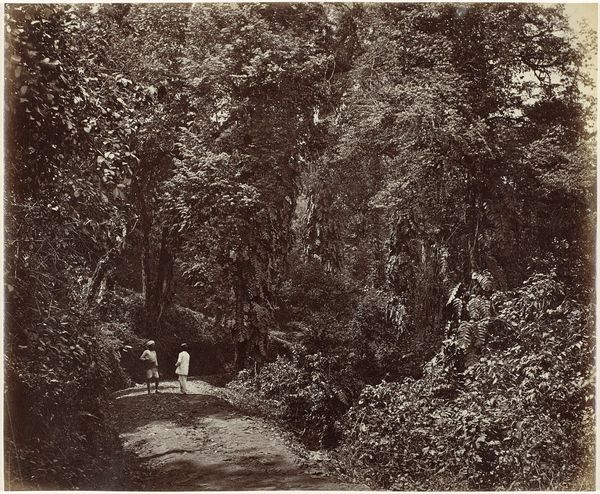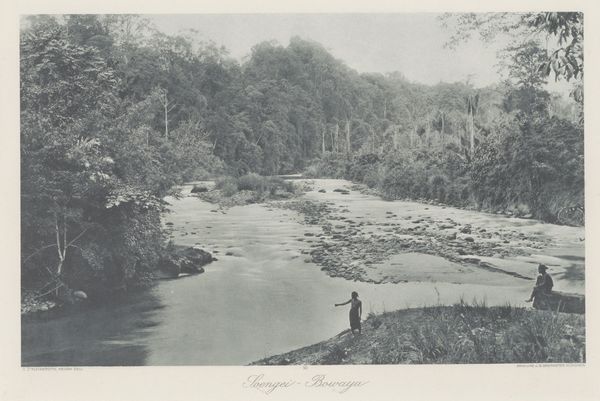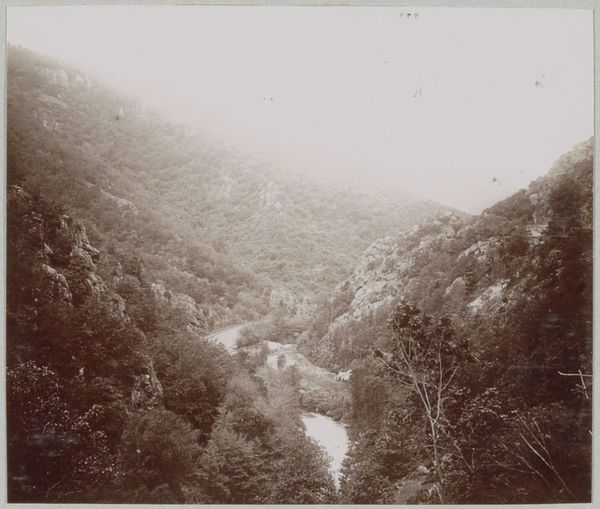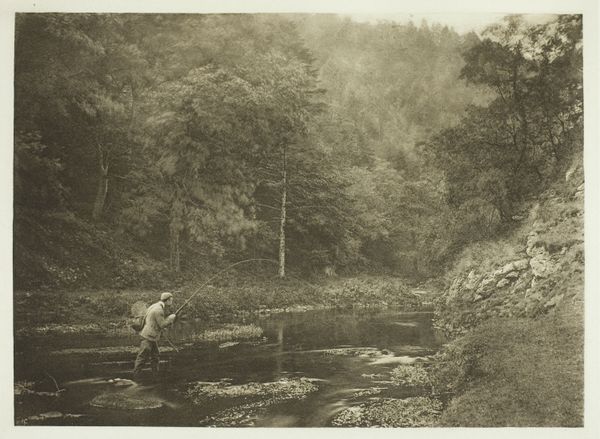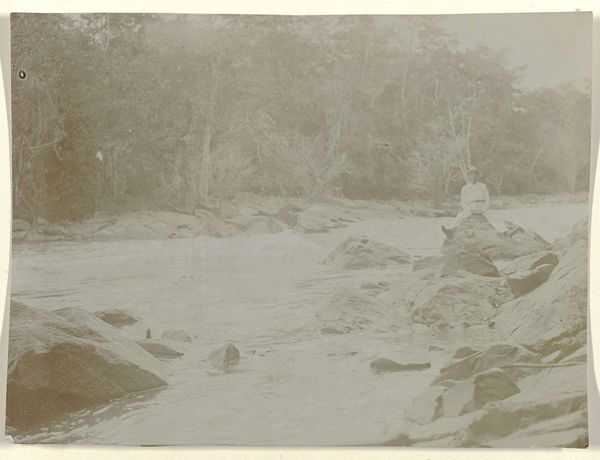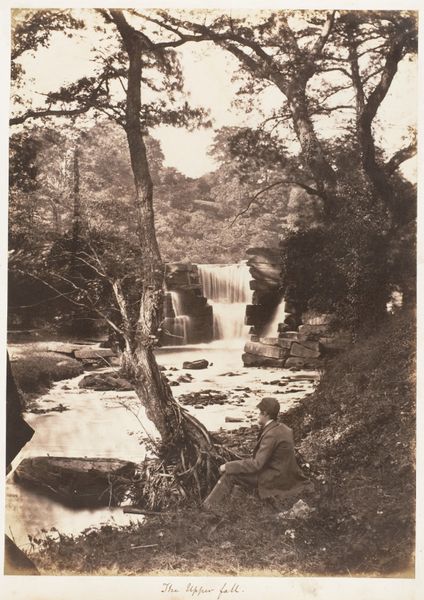
Dimensions: height 261 mm, width 206 mm
Copyright: Rijks Museum: Open Domain
Editor: We’re looking at Christiaan Benjamin Nieuwenhuis’ gelatin-silver print, "River Through the Anai Gorge, Sumatra," taken sometime between 1891 and 1912. The rushing water feels so dynamic, almost alive, against the stillness of the rocks and trees. It’s quite stunning. What grabs your attention most about this piece? Curator: Well, for me, it's the quiet hum of the sublime. This image is not just a record; it's an experience. It whispers of unexplored territories, that old whisper that got us all wondering what was over the hill. Nieuwenhuis invites us to get lost in the jungle's embrace. Can't you almost smell the damp earth and hear the distant call of unseen creatures? What do you think? Editor: Absolutely, that makes sense! I do wonder though, was he aiming for scientific accuracy or more of an emotional response with this? Curator: That's the heart of the question, isn't it? I imagine Nieuwenhuis wrestled with that exact point. The detail achieved with the gelatin-silver process certainly lends itself to realism. The textures of the rocks, the density of the foliage, are all captured with amazing fidelity. But there's also a selective focus, a deliberate blurring of certain areas that guide your eye. What that does is that it steers us towards the experience of being *in* that moment rather than simply observing it from a distance. For me, this blurring injects mood and therefore art! Editor: So it's both a document and a dream, of sorts. Thanks, that distinction is incredibly helpful in understanding his choice of technique! Curator: Exactly. It blurs the lines – literally and figuratively – to transport us. These old photos still carry an enduring sense of adventure, a thirst to know the unknown. And isn't that the magic that pulls us to art in the first place?
Comments
No comments
Be the first to comment and join the conversation on the ultimate creative platform.
